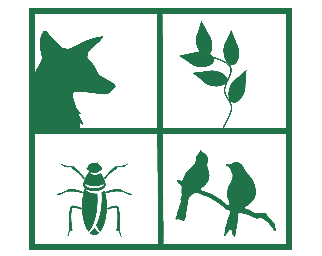What do a Leopard from Africa, a Squirrel from Moorhead, MN, and insects from Mexico have in common? They can all be found here at Concordia College! (Well, preserved specimens of them at least.)
At the South end of the bottom floor of the science center, there is an innocuous glass display case housing a taxidermy mount of an African leopard. Many students don’t venture past it, and if they do it’s probably just to use the bathrooms, however this is where I spent most of my summer research. This is the Elsie Welter Natural History Museum (or the Welter Museum for short).
My research partner, Emma Ericksen (’24), and I were selected to get the Welter Museum online to bring awareness to students, however, Emma and I quickly realized with no real policy guide or system in place the Museum wouldn’t be able to maintain an online presence let alone function through generations of students. So, we shifted our focus to creating a space that could easily function for student research and outreach programs.
To begin our summer research project, Emma and I first met with our project mentors, Dr. Joseph Whittaker Jr., Associate Professor of Biology, and Dr. Joy K. Lintelman, Professor of History and Director of the Heritage and Museum Studies (HMS) Program. It was clear to all of us that the Museum needed a lot of TLC before anything else.
Emma and I first cleared out bookshelves upon bookshelves of ornithology guides, soil surveys, and hobby books about backyard birds. Next, we turned our attention to the bird specimens weeded out of the bird collection to be deaccessioned due to their physical condition. We photographed them and took their field tags. Then, came the cleaning and the breaking apart of oryx heads (yes, you read that right). We donned masks and gloves to take apart four taxidermy mounts of oryx heads that may have been potentially preserved with arsenic and took up unnecessary space in the Museum. Not all was lost though! The skulls and horns are still in the collection and can be used for teaching and research as needed.
Amid all this, Emma and I were also focusing on creating a policy guide to managing the Concordia collections and provide guidance to students and staff working within the Welter Museum. This guide covers topics such as the mission of the museum, accessioning and deaccessioning specimens, loans, and responsibilities of students and faculty members working with the collections.
Finally, we created a list of rotating exhibit displays that will be changed out periodically and in response to world events. So if you’re looking to see or touch some unusual animals we don’t experience on campus, want to get involved and learn more, or simply see the new exhibits on display, I urge you to come see the Welter Museum in ISC 160 has to offer! Roll Cobbs!
